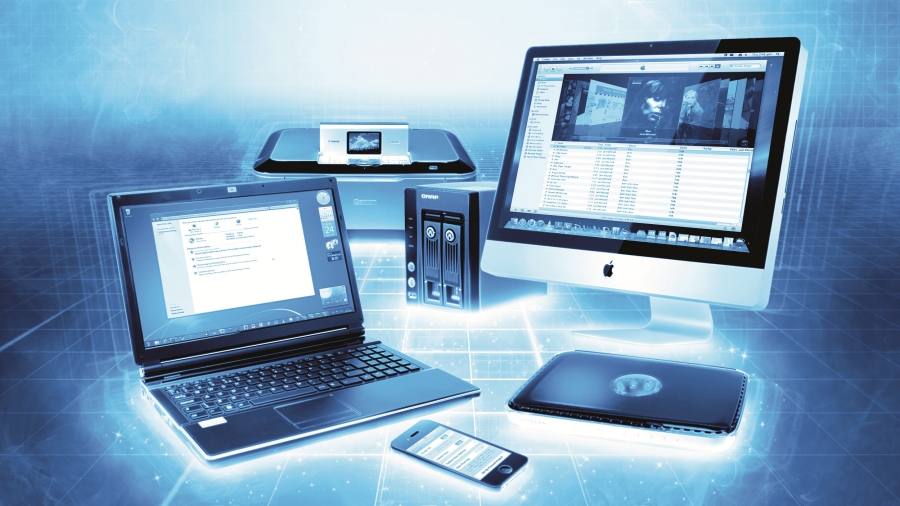Software defined networking: the business boost
SDN can support the response to IT evolution

One of the most challenging aspects of enterprise IT is controlling data flows in a market where applications, systems and networks are constantly changing.
Virtualisation has gone some way to streamlining applications, but software defined networking (SDN) is fast emerging as the next step.
With SDN, the control plane, which draws the network map, is separated from the data plane, which decides what to do with the information packets. The former is managed through software within the servers while the latter is run through the network hardware.
This reduces costs for configuration as companies can easily reconfigure the connectivity of systems. It also makes it easier for firms to integrate a cloud services and increase the return from their investments.
While virtualisation has already produced more flexibility, it won't have reached the network entirely until SDN is in place. SDN technology's potential is so far-reaching that the global market will grow from $1 million now to $1 billion in the next few years, according to the Accenture Technology Vision 2013 report.
The report, which examines future of enterprise IT and makes recommendations for how companies can take advantage of technology and software, hails SDN as a tool to improve competitiveness and flexibility for businesses.
It hasn't quite reached the market yet, but there are signs that it is being taken seriously by the industry. It is being backed by giants such as Cisco, which emphasises the increased need for network management as billions more devices are connected to the internet, and most large IT vendors are poised to launch their own SDN offerings soon.
Get daily insight, inspiration and deals in your inbox
Sign up for breaking news, reviews, opinion, top tech deals, and more.
In addition, the Open Network Forum (ONF) has been set up as a non-profit consortium dedicated to the commercial success of SDN.
Using bandwidth efficiently
The most important selling point of SDN is that it enables applications to 'talk' to the network and signal to provide more bandwidth if necessary, increasing its efficiency.
"SDN is using the true capacity that is needed, exactly when you need it. It is a smart type of network and can work out how much bandwidth is needed for a particular task," says Mike Sapien, Principal Analyst at Ovum.
This can be particularly valuable when using applications such as video and VoIP, to which the more traditional, hierarchical networks are not so well suited.
SDN can make businesses more flexible as it allows users to set up networks more quickly and manage them with less complexity. It also reduces vendor lock-in because firms don't need to replace existing network devices in order to integrate them.
"The problem with many existing IT systems is they are inflexible," says David Bradshaw, Research Manager, European SaaS and Cloud Services, IDC. "Anything that increases the flexibility is going to make the IT more effective."
SDN also promises efficiency savings in the same way virtualisation savings are made in the data centre, says Brent Lees, Senior Product Marketing Manager, Riverbed Technology.
"SDN proposes a virtual network connection that can be brought into and out of service rapidly," he says. "Clearly this makes a lot more sense than a nailed down, always on, offer from traditional solutions."
An SDN foundation
The technology should begin to infiltrate larger enterprises this year, and creep into SMBs over the next three. However, the latter group should be looking at what they can get from their providers now.
When the technology does hit the SMB market, firms will not be buying SDN, but products and services that include an SDN capability. For this reason it's advisable to look at services which are built on an SDN foundation.
Security will also have to be managed. The flexibility of SDN architectures allows firms to make changes more rapidly and even adjust them again afterwards; but they will have to provide more flexible levels of encryption to secure networks. Early adopters should be wary if they manage large amounts of sensitive data.
The move to software
It's clear that the future is more about software than about adding hardware; and the move towards cloud and virtualisation reduces the need for physical systems, in turn cutting costs, says Andrew Carr, CEO at Bull Information Systems.
"It's about what's critical to your business," he adds. "If it's just purely driven by cost, virtualisation creates hardware savings. It puts more into less."
But hardware isn't about to make an exit; it will always be needed along with the software for the physical storage of data.
To many, SDN is just another new term and when its capabilities do enter the market en masse, firms will be buying a service, rather than a package itself. As cloud and virtualisation infiltrate businesses of all sizes at some level, SDN will likely form a foundation for many new solutions.
Carr adds: "I don't think we should talk to firms about SDN, we should talk about services. You need to look at people using a service and that way of thinking will increase adoption."